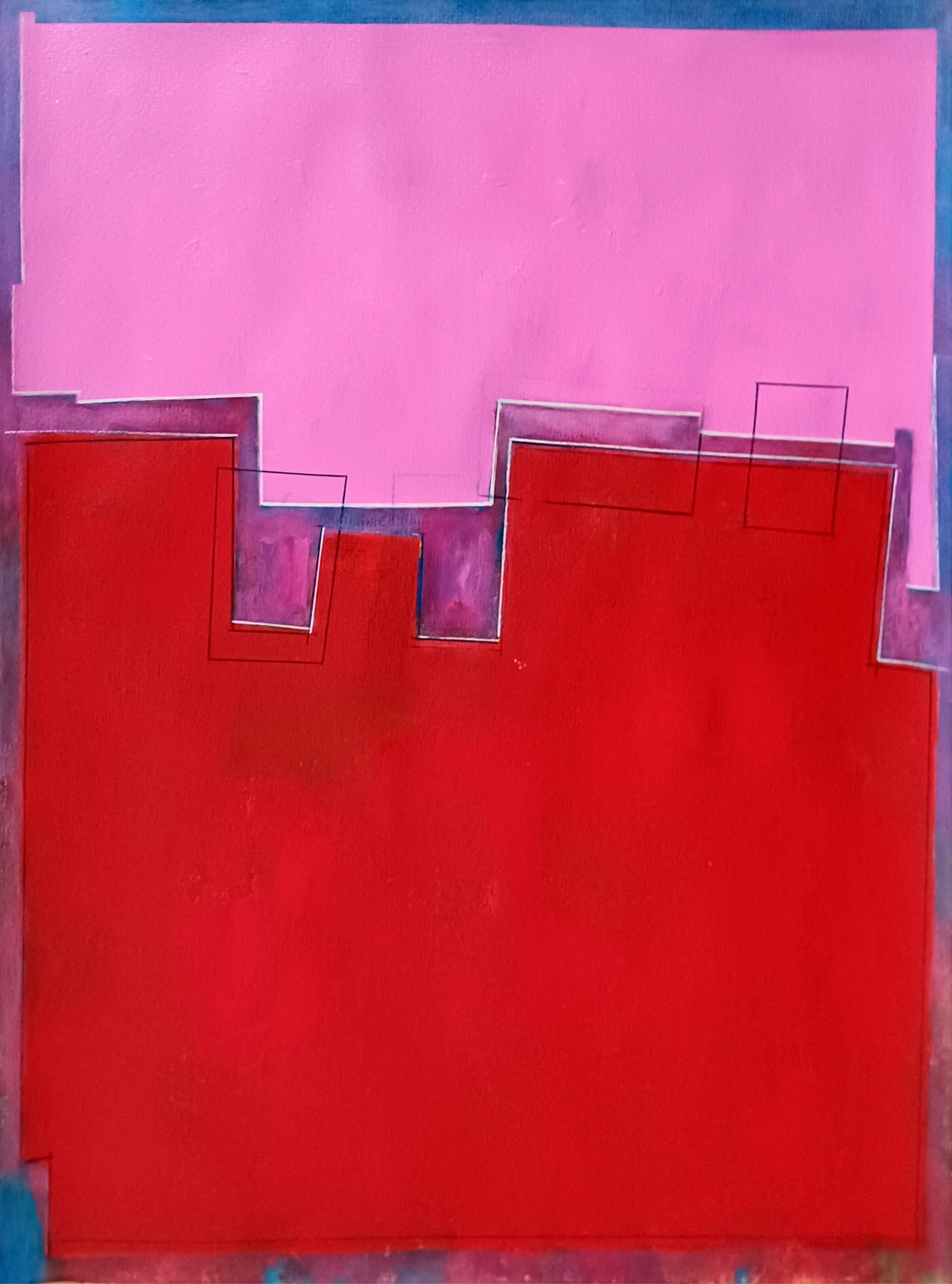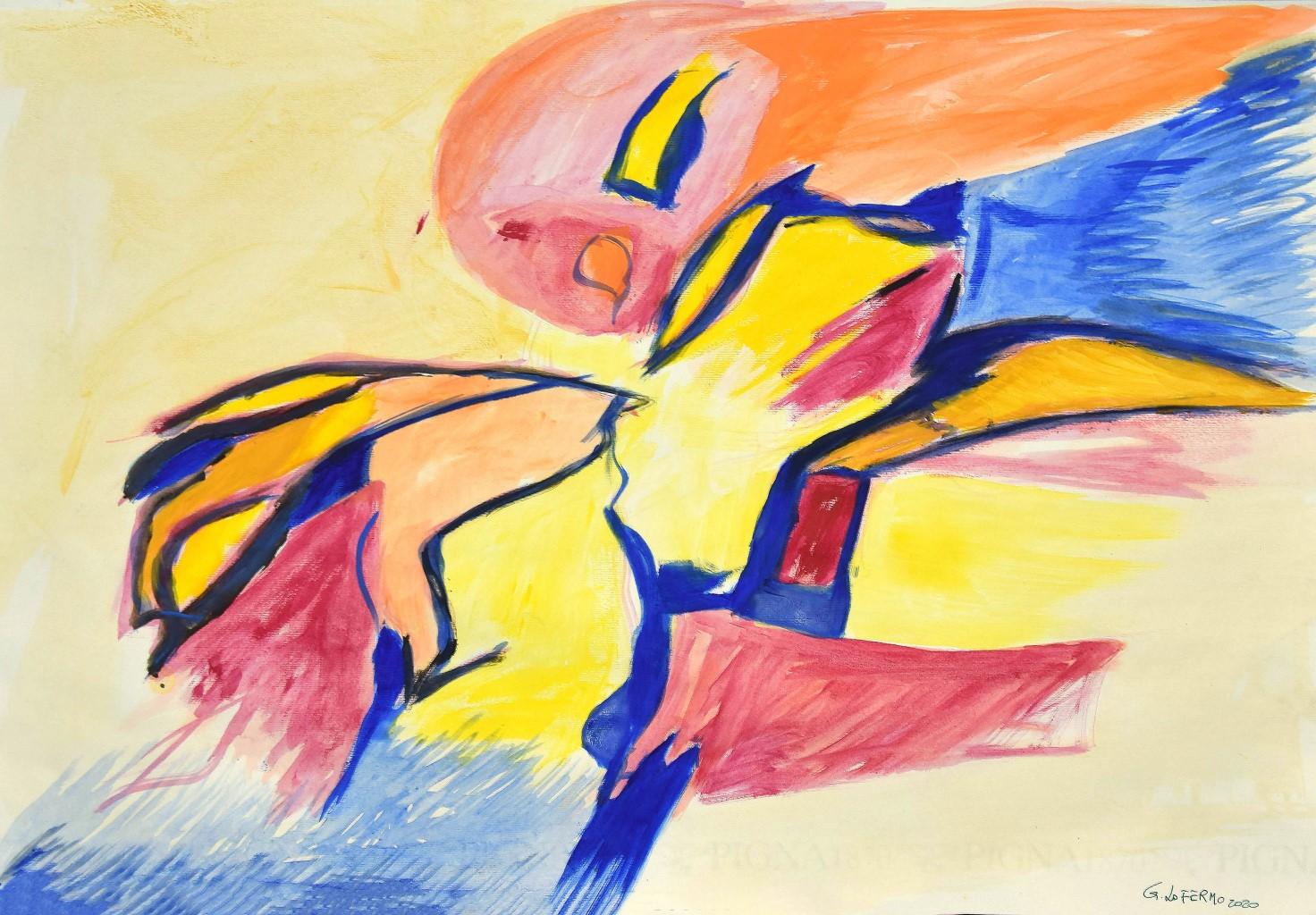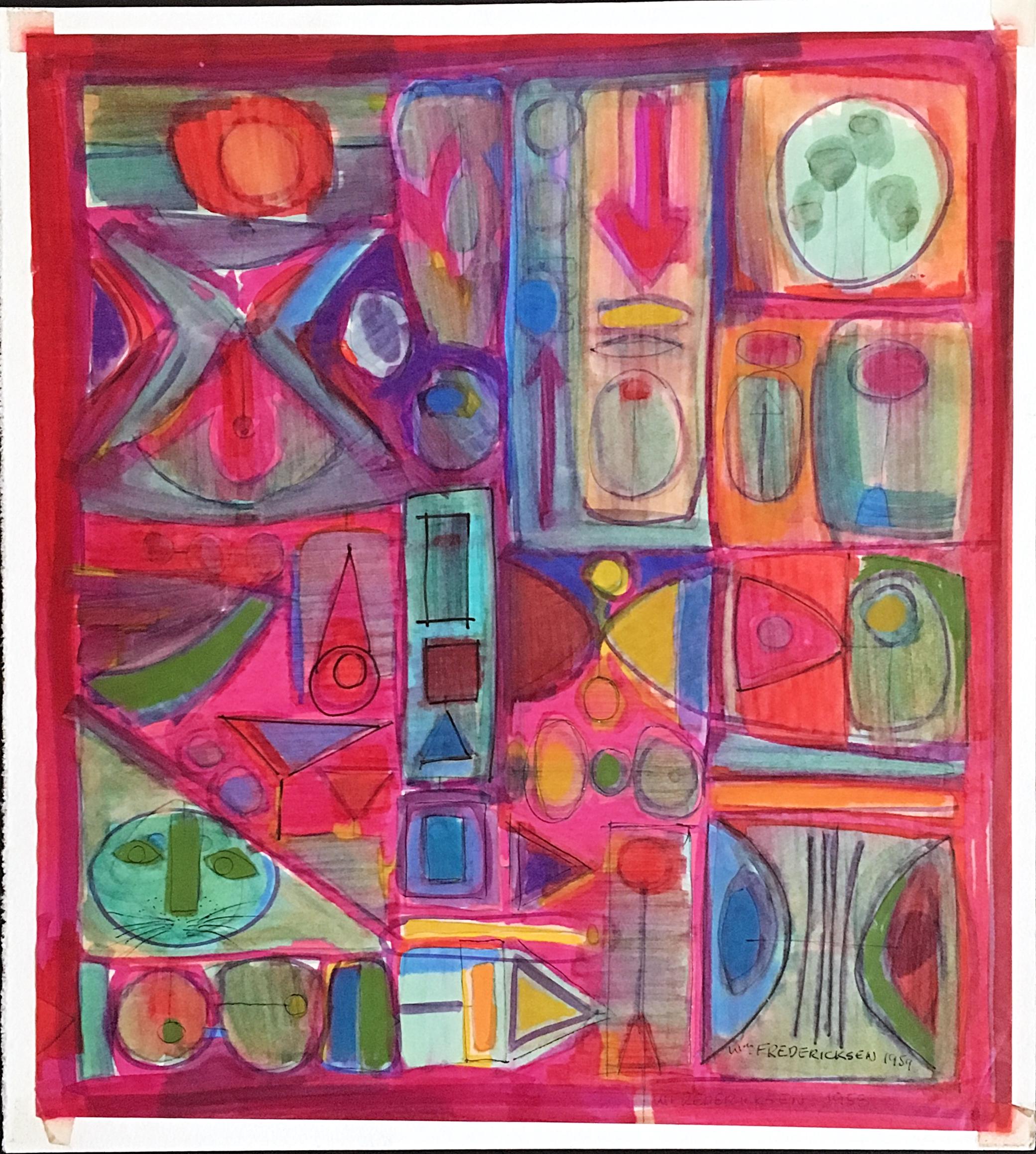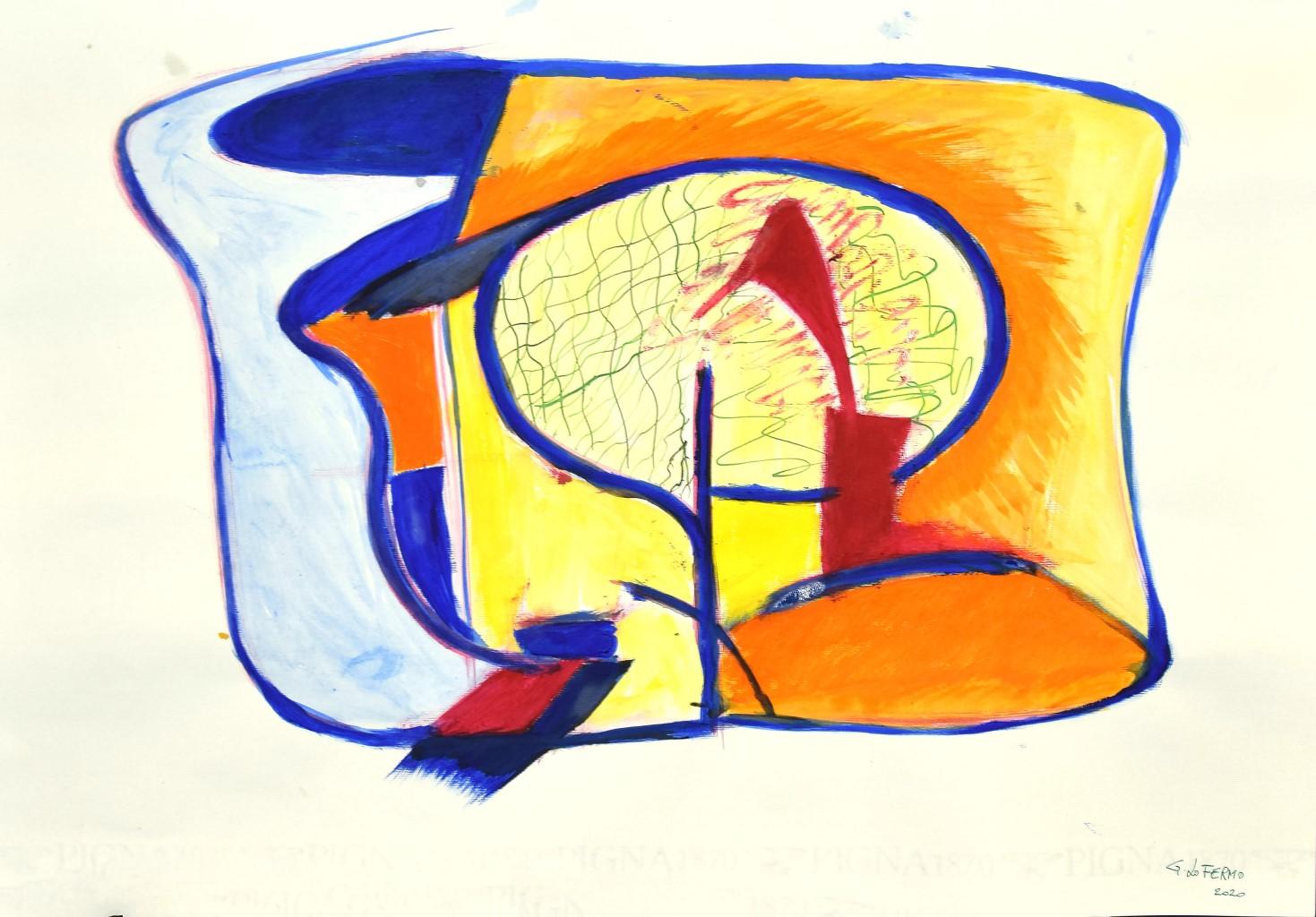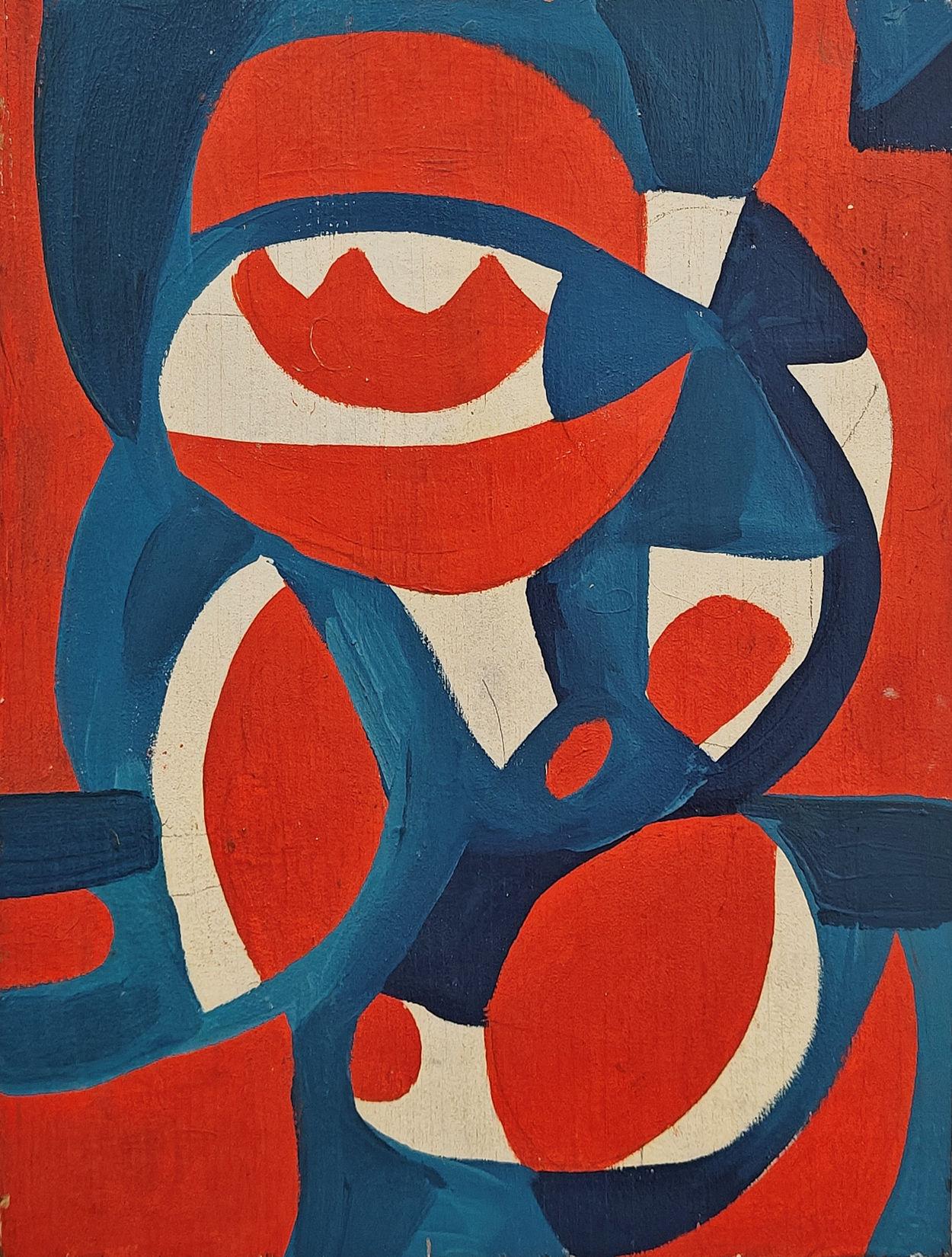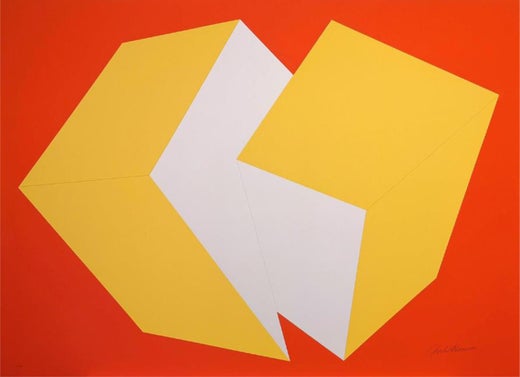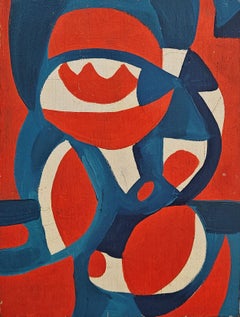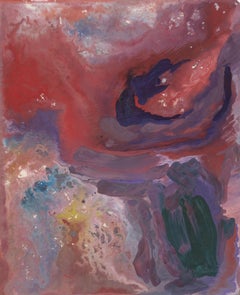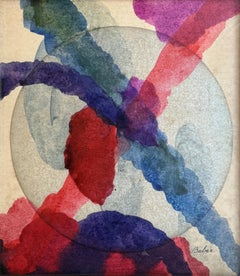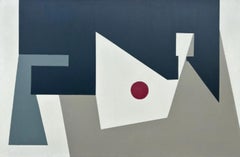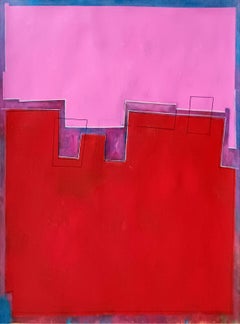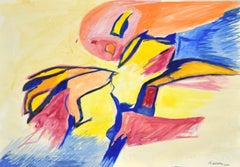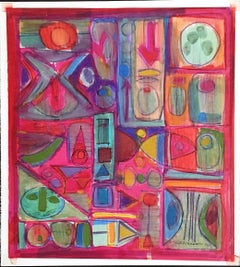Items Similar to "Alizarin Orionids" Charles Hinman, Work on Paper, Red Geometric Abstraction
Want more images or videos?
Request additional images or videos from the seller
1 of 7
Charles Hinman"Alizarin Orionids" Charles Hinman, Work on Paper, Red Geometric Abstraction2003
2003
$2,500
£1,937.98
€2,193.64
CA$3,578.03
A$3,904.43
CHF 2,026.63
MX$46,713.20
NOK 25,724.40
SEK 24,095.72
DKK 16,385.79
About the Item
Charles Hinman
Alizarin Orionids, 2003
Signed and dated lower right
Watercolor on paper
12 x 12 inches
Throughout his long career, Charles Hinman has collapsed the divide between painting and sculpture. Heavily influenced by Russian Suprematism, Hinman creates abstract works, favoring color, shape, and form over literal representation. He is best known for his wall pieces, variously shaped colored canvases that he pieces together and overlaps to create complex, geometric forms. His aim, as he once described, is to create “two separate entities that play against each other, to make the piece work with real and illusionary space, thus combining two separate realms that come together and play with one another.”
- Creator:Charles Hinman (1932, American)
- Creation Year:2003
- Dimensions:Height: 12 in (30.48 cm)Width: 12 in (30.48 cm)
- More Editions & Sizes:Unique workPrice: $2,500
- Medium:
- Movement & Style:
- Period:
- Framing:Frame IncludedFraming Options Available
- Condition:
- Gallery Location:New York, NY
- Reference Number:1stDibs: LU1841216191622
Charles Hinman
Charles Hinman (born 1932) is an American artist renowned for pioneering the use of three-dimensional shaped canvases. Born in Syracuse, New York, Hinman attended Syracuse University, where he earned a Bachelor of Fine Arts in 1955. He initially pursued a career as a professional baseball player before an arm injury led him to focus fully on art. Hinman gained recognition in the mid-1960s for his innovative use of shaped canvases, which explore the interplay between real and illusory space. His works, often characterized by their geometric, sculptural forms, project from the wall and create a dynamic interaction between light, color, and shadow. This fusion of painting and sculpture places him at the forefront of Minimalism and shaped-canvas art movements. His early exhibitions at the Sidney Janis Gallery and his first solo show at Richard Feigen Gallery in 1964 helped establish his reputation. Throughout his career, Hinman’s works have been included in prominent exhibitions and acquired by major institutions, including the Museum of Modern Art (MoMA), the Whitney Museum of American Art, and the Los Angeles County Museum of Art. He has also been the recipient of prestigious awards, such as a Guggenheim Fellowship and multiple Pollock-Krasner Foundation grants. In recent years, his works continue to be celebrated for their exploration of dimensionality and form, with exhibitions like "The Shaped Canvas Revisited" in 2014 reaffirming his influence on modern art
About the Seller
5.0
Platinum Seller
Premium sellers with a 4.7+ rating and 24-hour response times
Established in 2022
1stDibs seller since 2022
130 sales on 1stDibs
Typical response time: <1 hour
- ShippingRetrieving quote...Shipping from: New York, NY
- Return Policy
More From This Seller
View All"Untitled" Howard Daum, Abstract, Red White and Blue, Modernist Composition
Located in New York, NY
Howard Daum
Untitled, 1972
Signed and dated on verso
Oil on board
10 1/8 x 8 inches
Howard Daum was born in Poland. His family lived in Lodz until he turned 14, when he and his mother left the counrtry. They settled in Montreal, Canada, where Daum learned from the artist Alexander Bercovitch from 1934 to 1937. In 1938, Daum and his mom traveled to New York and chose the Bronx as their home.
After finishing high school in 1940, Daum received a scholarship to the Art Students League. There, he learned from teachers like Will Barnet, Cameron Booth, Morris Kantor, Harry Sternberg, and Vaclav Vytlacil, who was a key mentor. Vytlacil had studied under modern painter Hans Hofmann in Munich in 1921 and helped start the American Abstract Artists group in 1936.
In 1943 and 1944, Daum served in the U. S. Army in Mississippi before coming back to New York. During 1944 and 1945, he had lessons with Hofmann at his school in Greenwich Village. Daum's art during this time became more abstract, using bold and bright colors with clear brushstrokes. The space in his work was very shallow, with objects like figures and easels overlapping each other.
Some of Daum’s artist friends, such as Robert Barrell, Peter Busa, and Steve Wheeler...
Category
1970s Abstract Abstract Paintings
Materials
Oil, Board
"Untitled" Friedel Dzubas, Shades of Red and Blue, Lyrical Expressionist Work
By Friedel Dzubas
Located in New York, NY
Friedel Dzubas
Untitled, 1985
Acrylic on paper
24 1/2 x 30 inches
A noted figure in the New York School, Friedel Dzubas was associated with the Color Field painting movement in the...
Category
1980s Color-Field Abstract Drawings and Watercolors
Materials
Paper, Acrylic
"Across the Wide, Tokyo" Alice Baber, 1964 Color-Field Work on Paper
By Alice Baber
Located in New York, NY
Alice Baber
Across the Wide, Tokyo, 1964
Signed, titled, and dated on the reverse
Watercolor and leaf collage on paperboard
10 1/2 x 9 1/2 inches
Alice Baber once famously describe...
Category
1960s Color-Field Abstract Drawings and Watercolors
Materials
Paper, Watercolor, Board
"Composition" Balcomb Greene, Geometric Abstract, Early Modernist Composition
By Balcomb Greene
Located in New York, NY
Balcomb Greene
Composition, 1936
Signed Balcomb Greene on verso upper stretcher bar
Signed on backing board: Balcomb Greene
Oil on canvas
30 1/4 x 46 inches
Provenance:
The artist
A...
Category
1930s Abstract Abstract Paintings
Materials
Canvas, Oil
"Untitled" Ray Parker, Color Field Lyrical Abstract, Blue and Magenta Painting
Located in New York, NY
Ray Parker
Untitled, 1969
Signed and dated on the reverse
Oil on canvas
32 x 32 inches
Provenance
Private Collection, New York
Ray Parker was born in 1922 in South Dakota. After c...
Category
1960s Color-Field Abstract Paintings
Materials
Canvas, Oil
$23,600 Sale Price
20% Off
"Untitled, " Daniel Lergon, German Contemporary Abstract Painting
Located in New York, NY
Daniel Lergon (German, b. 1978)
Untitled, 2012
Oil on canvas
47 1/2 x 39 1/2 inches
Signed and dated on the reverse
Provenance:
Galerie Christian Lether...
Category
2010s Contemporary Abstract Paintings
Materials
Canvas, Oil
You May Also Like
Red and pink composition D, Painting, Acrylic on Paper
Located in Yardley, PA
original artwork, acrylic on paper 76x56x0.1 cm. Unframed "...Colour is always the main principal in my work as well as the medium, in this case the paper and acrylic, the combin...
Category
2010s Abstract Abstract Paintings
Materials
Acrylic
Geometrical Abstract Composition - Mixed Media on Paper by G. Lo Fermo - 2020
By Giorgio Lo Fermo
Located in Roma, IT
Geometrical Abstract Composition is an original contemporary artwork realized by the Italian artist Giorgio Lo Fermo (Messina, 1947) in 2020.
Mixed Media on Paper.
Hand-signed on t...
Category
2010s Abstract Abstract Paintings
Materials
Mixed Media
Untitled mid century modern geometric abstraction
By William Fredericksen
Located in New York, NY
William Fredericksen
Untitled mid century modern geometric abstraction, 1958-1959
Watercolor and Gouache on Board
Hand signed and dated on the front
12 4/5 × 11 7/10 inches
Unframed
...
Category
Mid-20th Century Abstract Geometric Abstract Drawings and Watercolors
Materials
Mixed Media, Watercolor, Gouache
French Modern Art by James Coignard - Red
By James Coignard
Located in Paris, IDF
Engraving with carborandum & collages, ed. 12/30 + white frame
James Coignard (1925-2008) was a well known French artist/printmaker recognised for his colourful, geometric abstracti...
Category
Early 2000s Abstract Geometric Abstract Prints
Materials
Engraving
Geometrical Abstract Composition - Mixed Media on Paper by G. Lo Fermo - 2020
By Giorgio Lo Fermo
Located in Roma, IT
Geometrical Abstract Composition is an original contemporary artwork realized by the Italian artist Giorgio Lo Fermo (Messina, 1947) in 2020.
Mixed Media on Paper.
Hand-signed on t...
Category
2010s Abstract Abstract Paintings
Materials
Mixed Media
Geometrical Abstract Composition - Mixed Media on Paper by G. Lo Fermo - 2020
By Giorgio Lo Fermo
Located in Roma, IT
Geometrical Abstract Composition is an original contemporary artwork realized by the Italian artist Giorgio Lo Fermo (Messina, 1947) in 2020.
Mixed Media on Paper.
Hand-signed on t...
Category
2010s Abstract Abstract Paintings
Materials
Paper, Mixed Media
